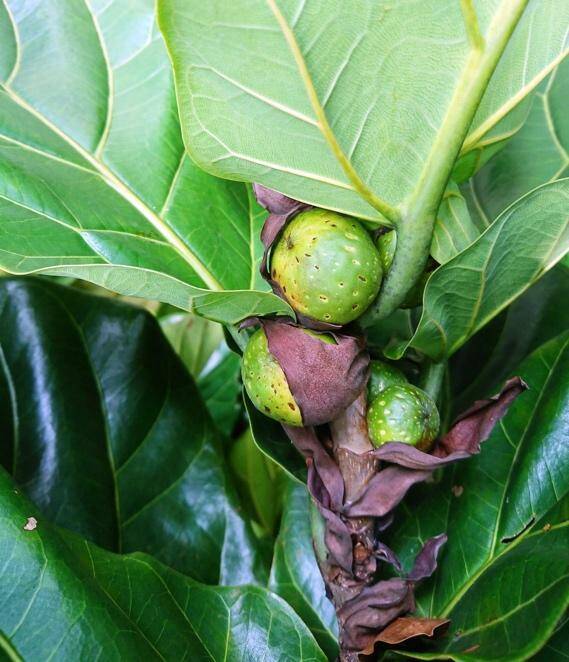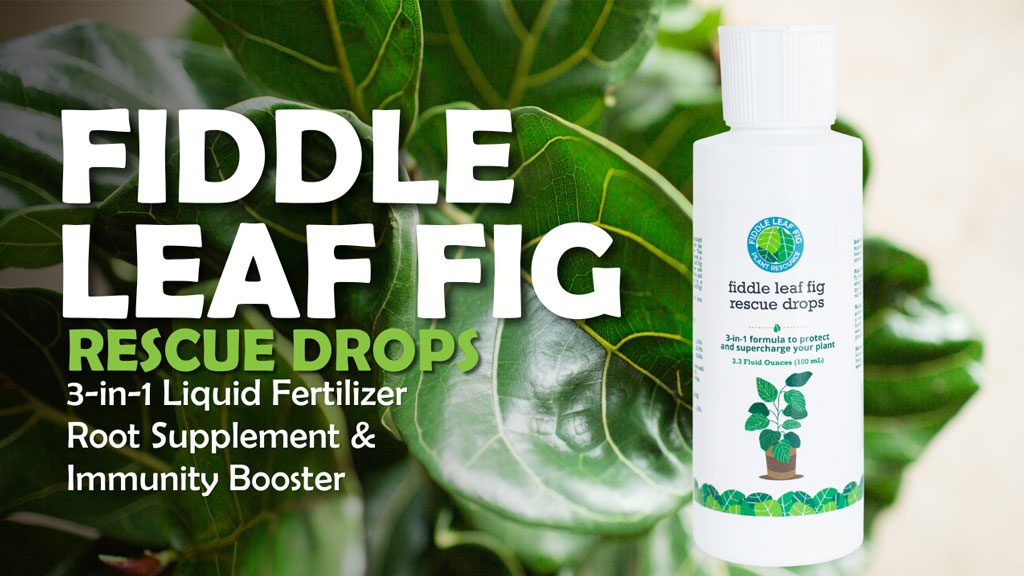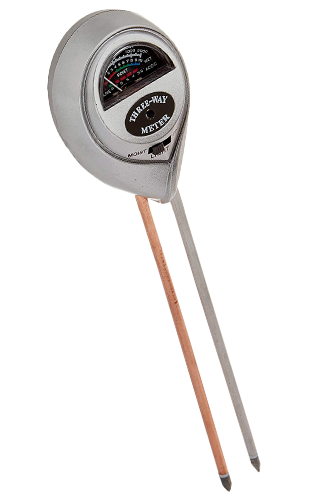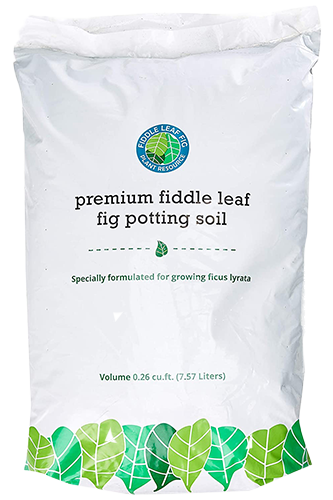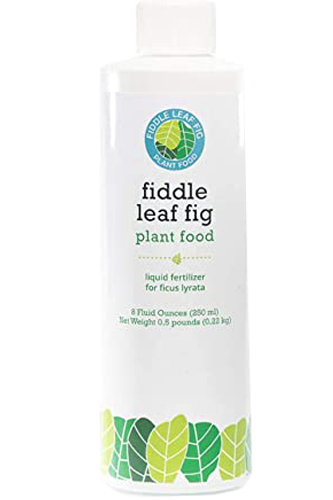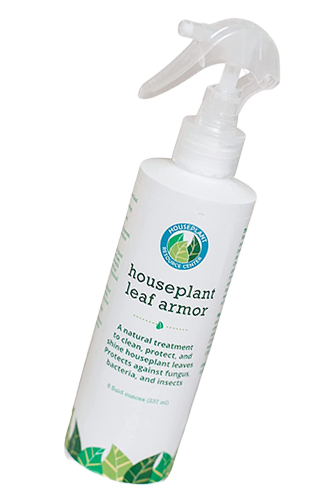Fiddle Leaf Fig Fruit Complete Guide
As fiddle leaf fig owners, we’re big fans of those beautiful, iconically fiddle-shaped leaves, but we often forget that ficus lyrata is also a variety of fig tree. So sometimes, our fiddles will actually bear fruit!

Now, indoor trees (which is what most of us own) rarely fruit. But sometimes outdoor fiddles in tropical climates will grow small, round, fig-like fruits.
These fruits aren’t like the typical, edible figs we sometimes find in the produce section of the grocery store in the summer or like the delicious filling of a Fig Newton. Those figs usually come from the fiddle’s cousin, Ficus carica.
There’s a reason why fiddles are more popular ornamentals than fruit trees. The fruits are not toxic, but they don’t taste good! Even when ripe, the fruit of the fiddle leaf fig tree has leathery skin. They are not sweet like the typical figs we consume and are said to range from bland to a bit tart and have an unpleasant mouth-drying effect. Not particularly appetizing!
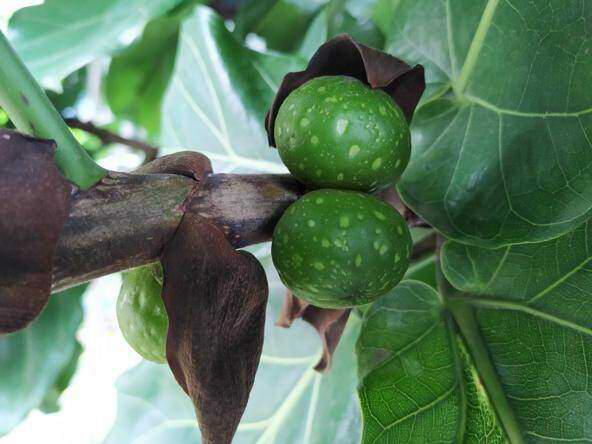
If you’re a huge fiddle leaf fig fan and want to learn more about this tree’s fascinating reproductive process, we’ve got you!
But first, let’s talk about the main reason why indoor fiddles don’t flower or fruit.
Why don’t indoor fiddle leaf figs bear fruit?
Part of the reason why indoor fiddles almost never fruit is light conditions. Fiddles require a lot of light just to be healthy, and even more to actually fruit.
The other, even bigger reason is because you don’t find many pollinators indoors, and pollinators—wasps in particular— are required for ficus species to grow figs. And fig pollination isn’t a simple process of a wasp flitting from flower to flower in a sunny field. It’s a much more fascinating—and grim—story of coevolution, or two species that have come to rely on each other completely for survival and reproduction.
This is why it is nearly impossible to grow a fiddle leaf fig from a seed.
How Fiddle Leaf Fruit Figs Develop
Figs are one of the most fascinating fruits because of the way they grow. And it all starts with a wasp.
Figs have a unique, crunchy texture. This is due to the interior of the structure made of flowers and seeds that later becomes a fig.
These clusters of inside-out flowers act as the ovaries of the fig tree. In order to reproduce, these flowers must be pollinated by a fig wasp.
When the fruits begin to mature, a female fig wasp will enter the fruit through a small opening and lay her eggs, and at the same time, pollinate the flower. The female wasp then infuses the flower with a chemical that causes them to ripen and provide food for her young. This will cause the flower to ripen into what we typically consider a fruit.
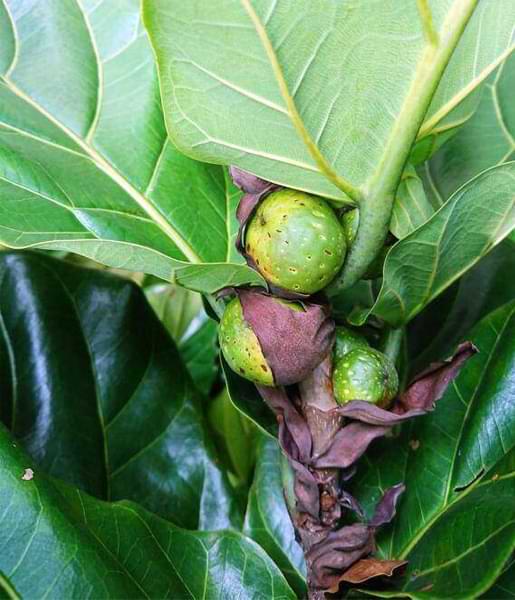
The female wasp then dies and her eggs hatch. The baby wasps will grow up and mate with each other inside the fruit. The male wasps will chew passageways out of the fruit, but then die, allowing the now pregnant females to leave the fig. When the females find their way out of the ripe fruit, they will find their own fig fruits to lay their eggs in and pollinate those fruits with pollen from the fruit where they were born, and the whole cycle begins again.
Interesting, gruesome, and fascinating, right?
Fig Tree Fruit
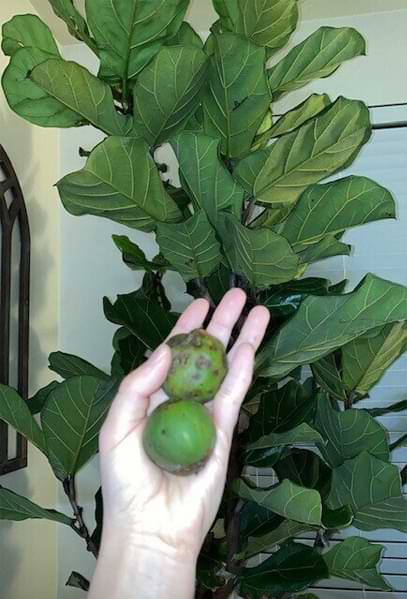
Some fig trees, such as Ficus carica, the common fig tree that bears the fruit we most commonly eat, grow both male and female flowers, so the female fruits can be pollinated with pollen from fruits on the same tree. These figs are considered monoecious and produce edible (or at least palatable) fruit.
Other fig-trees, ficus lyrata included, are considered dioecious and grow fruit that is both male and female. More than one tree is necessary for fruit production (another reason why fiddles almost never fruit indoors!).
These dioecious trees tend to produce fruit that just doesn’t taste good. This fruit is sometimes used for animal feed but otherwise is thrown away.
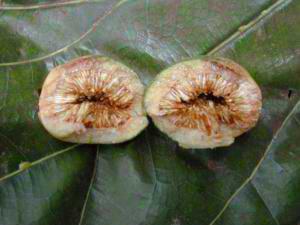
These wasps have short life cycles of just two months, which allows ficus trees to produce fruit year-round. So if you have an outdoor fiddle leaf fig with the proper climate conditions and pollinators, you could see fruit at any time of the year!
What Should You Do if Your Outdoor Fiddle Leaf Fig Bears Fruit?
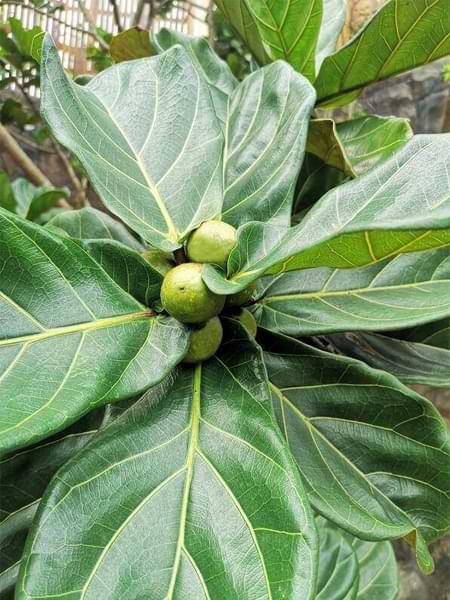
Honestly, not much. Fiddle leaf figs are prized for their beauty and are fantastic ornamentals, but they are severely lacking in the edible fruit department.
At most, you can put the fruit in your compost pile and use it to nourish your other plants. Feel proud that you own a happy, healthy fiddle leaf fig!
To learn more:
- Sign up for our free Fiddle Leaf Fig Care 101 Webinar and make sure you’re subscribed to our newsletter.
- Download our free Propagation Guide
- Read The Fiddle Leaf Fig Expert, your complete guide to growing healthy fiddle leaf fig plants. The book is available in full-color paperback or Kindle edition on Amazon now!
- Join our Facebook Community and chat with other fiddle leaf fig lovers.
Grab the Essentials for Your Fiddle Leaf Fig:
- Premium Fiddle Leaf Fig Potting Soil
- Fiddle Leaf Fig Plant Food
- Root Rot Treatment
- Houseplant Leaf Armor to protect against insects, bacteria, and fungus (As an added bonus, it also cleans and adds shine to your plant’s leaves!)
- Moisture meter to always know when your plant is thirsty.
- Houseplant Propagation Promoter to propagate more quickly and with more success.

